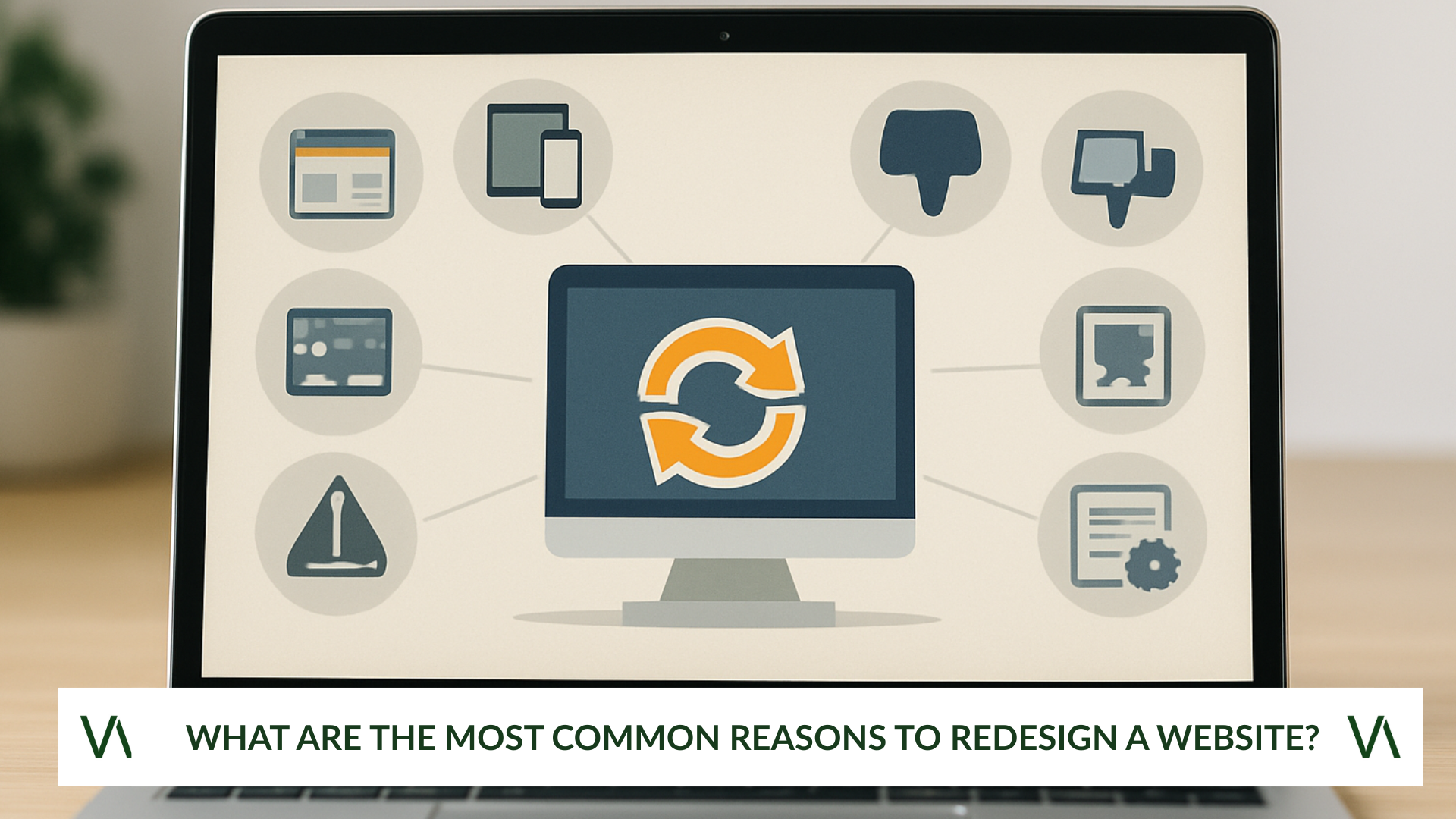What are the most common reasons to redesign a website?
Having an updated, functional, and attractive website is no longer optional — it’s a necessity for any business that wants to stay competitive. If you’re wondering when the right time is to redesign your site, here you’ll find the most common signs that it’s time to take the leap.

Why is it important to consider a redesign?
Whether you run a small business or manage a large company, your website is one of your main showcases. Over time, technology, consumer habits, and design trends evolve. Updating your website when needed not only strengthens your brand image but also improves your clients’ experience and can lead to better results.
Common reasons to redesign your website
1. Outdated design
Design trends change quickly. A website that looks old-fashioned (more than 2–3 years without updates) can give an unprofessional or outdated image, directly affecting how your business is perceived.
2. Lack of mobile responsiveness
Nowadays, the majority of web traffic comes from mobile devices. If your site doesn’t display properly on smartphones or tablets, you’re missing out on a significant part of your audience and your business opportunities.
3. Poor user experience (UX)
Confusing navigation, slow loading times, or difficulty finding key information are reasons for visitors to leave immediately. A high bounce rate is often a clear sign that the site needs usability improvements.
4. Low conversion rates
If your site doesn’t convert visits into sales, subscriptions, or leads, the structure, copy, or calls to action might not be optimised. A redesign can help you align your website with your business goals.
5. Business or brand evolution
Have you updated your corporate identity, launched new services, or changed your strategy? Your website should reflect these changes to maintain brand consistency and connect better with your clients.
6. Outdated or hard-to-manage content
Having old or difficult-to-update content not only leaves a bad impression but also makes day-to-day management more complicated. Nowadays, content management systems (CMS) make updating a website much easier.
7. Technical issues or poor performance
Frequent errors, pages that don’t load correctly, or a slow site can harm both the user experience and your search engine ranking.
8. Competitors have upgraded their websites
If your competitors have more modern and functional websites, it’s likely that customers will choose them over you. Keeping up to date is key to not falling behind.
How often should you redesign a website?
There’s no strict rule, but many experts agree that it’s worth doing a thorough website review every 2–3 years. However, content updates, security checks, and minor technical improvements should happen continuously to ensure good performance.
RELATED CONTENT
-
Dissolution and closure of an SME: key considerations
Closing an SME is far more complex than just shutting its doors. It requires careful legal, accounting, and tax management, as well as a solid understanding of the responsibilities of directors and shareholders. In this post, we explain everything you need to consider to avoid sanctions and ensure an orderly and risk-free closure.
-
Censos Web and the new 036 form: the digital revolution for entrepreneurs
The Spanish Tax Agency (AEAT) has launched "Censos Web", a new tool that significantly simplifies the registration process for business owners, professionals, and withholders. Thanks to this guided and digitalised system, registering as a self-employed worker or entrepreneur in Spain is now easier, faster, and safer.
-
Adverse COVID-19 Vaccine Reaction Recognised as Workplace Accident in Teacher’s Case
Adverse COVID-19 Vaccine Reaction Recognised as Workplace Accident in Teacher’s Case
